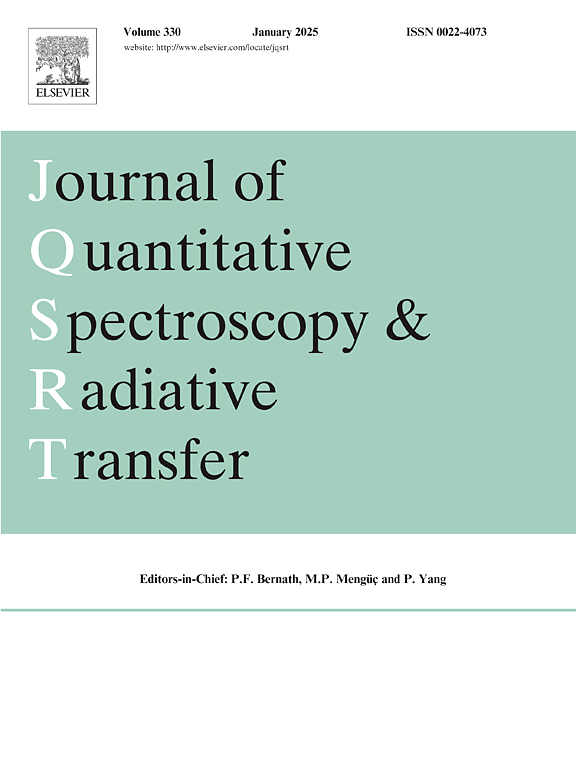Improving emissivity measurement accuracy using FTIR-based infrared ellipsometer for narrow-angle directional thermal radiation
IF 2.3
3区 物理与天体物理
Q2 OPTICS
Journal of Quantitative Spectroscopy & Radiative Transfer
Pub Date : 2025-03-21
DOI:10.1016/j.jqsrt.2025.109446
引用次数: 0
Abstract
Accurate emissivity measurement is essential for characterizing metasurfaces with highly directional thermal radiation. Traditional Fourier-transform infrared (FTIR) spectroscopy, particularly when using focusing optics, introduces measurement artifacts due to divergence angle effects, leading to underestimated emissivity and angular deviations. This study investigates the use of FTIR-based infrared ellipsometer to improve emissivity measurement accuracy for narrow-angle thermal emitters. By systematically comparing a focusing FTIR system and an FTIR-based ellipsometer, we quantitatively evaluate the impact of divergence angle on emissivity measurements. The results indicate that the divergence angle in focusing FTIR systems leads to a reduction in measured emissivity to less than two-thirds of the expected value, while the ellipsometer, when properly configured, mitigates these errors through controlled collimation of incident light. Furthermore, we propose a method to determine and correct divergence angle effects using mathematical modeling and optical path analysis. The divergence angles were measured as 11°–13° for the focusing FTIR system and 1.04°–2.08° for the ellipsometer, demonstrating the effectiveness of ellipsometer in reducing measurement uncertainties. These findings provide valuable insights for optimizing measurement techniques in narrow-angle thermal radiation characterization. By improving emissivity measurement accuracy, this study facilitates advancements in thermophotovoltaics, infrared sensing, and radiative heat transfer applications.
求助全文
约1分钟内获得全文
求助全文
来源期刊
CiteScore
5.30
自引率
21.70%
发文量
273
审稿时长
58 days
期刊介绍:
Papers with the following subject areas are suitable for publication in the Journal of Quantitative Spectroscopy and Radiative Transfer:
- Theoretical and experimental aspects of the spectra of atoms, molecules, ions, and plasmas.
- Spectral lineshape studies including models and computational algorithms.
- Atmospheric spectroscopy.
- Theoretical and experimental aspects of light scattering.
- Application of light scattering in particle characterization and remote sensing.
- Application of light scattering in biological sciences and medicine.
- Radiative transfer in absorbing, emitting, and scattering media.
- Radiative transfer in stochastic media.

 求助内容:
求助内容: 应助结果提醒方式:
应助结果提醒方式:


